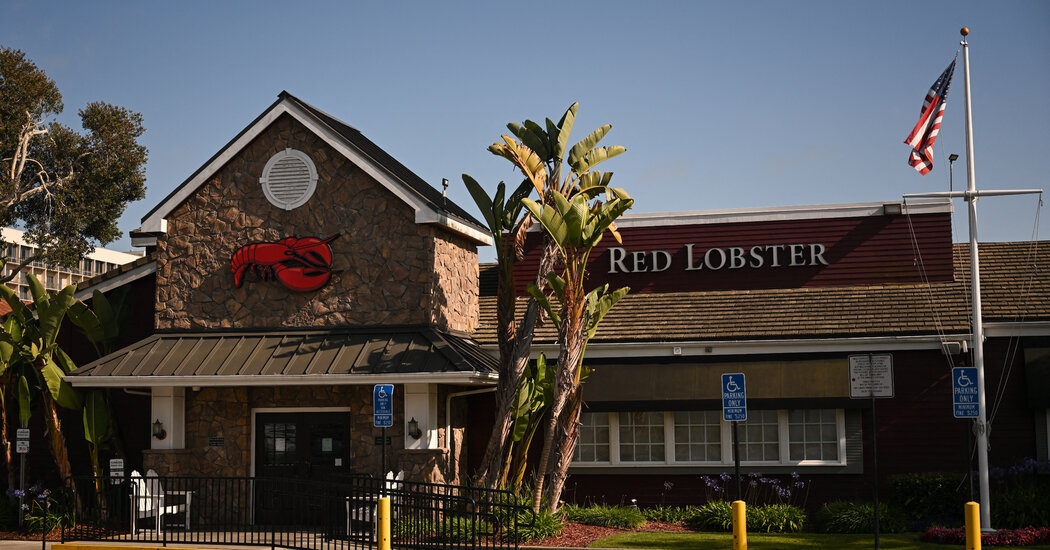Versatile and resilient, the lobster survives by molting, shedding its skin and growing into a new, bigger shell. But eventually, energy runs low and the transformation becomes more difficult.
Red Lobster, one of America’s best-known shellfish ambassadors, has reached this stage in its life cycle: The once-ubiquitous restaurant chain filed for Chapter 11 bankruptcy protection on Sunday after more than half a century as the country’s pre-eminent seafood franchise.
In court filings, the company said it had more than 100,000 creditors and liabilities of $1 billion to $10 billion. Red Lobster said it planned to reduce its locations as it prepared to to sell most of its assets. In the meantime, surviving Red Lobster restaurants will remain open.
It has been a painful, slow end for Red Lobster, whose death throes were telegraphed earlier this year when the company reportedly sought to restructure its debt. After decades as a General Mills subsidiary, Red Lobster was purchased by a private equity firm in 2014, and bolstered by a 2020 investment from a Thai seafood conglomerate. But it faced challenges in the years since the beginning of the coronavirus pandemic, when industry headwinds, rising costs and changes in dining habits forced the company to close underperforming locations.
The Thai seafood company, Thai Union Group, announced in January that it was abandoning its Red Lobster investment. Last week, dozens of Red Lobster locations began selling off assets through a liquidator, offering up the spoils of a crumbling restaurant dynasty like industrial freezers, lobster tanks and bar equipment (alcohol not included).
In its heyday, Red Lobster had obtained coveted status among suburban dining options: affordable enough to be accessible, fancy enough to be aspirational. Despite its founding in Orlando, Fla., the chain drew much of its inspiration from Bar Harbor, a tourist destination off the rocky Atlantic coast of Maine.
In its 56-year life span, Red Lobster had seen a host of reinventions. Initially billed as an oyster lounge and cocktail bar in the 1960s and ’70s, Red Lobster emerged in later years as a family-friendly dining choice that, for many, was an introduction to seafood.
It perhaps reached the pinnacle of cultural consciousness with a mention from Beyoncé, who name-dropped the restaurant in her 2016 song “Formation,” and just as swiftly fell from it. Last year, the chain stumbled on an all-you-can-eat shrimp deal that was so popular with diners, it helped push the company to an $11 million quarterly loss.
“This restructuring is the best path forward for Red Lobster,” Jonathan Tibus, the company’s chief executive, said in a statement on Sunday. “It allows us to address several financial and operational challenges and emerge stronger and refocused on our growth.”
Red Lobster did not immediately respond to a request for comment.
